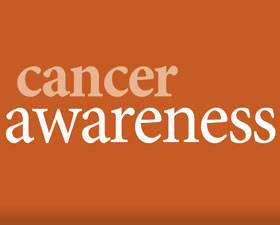More effective cancer screenings
A more comfortable and less invasive screening method for colorectal cancer is helping to reduce the rates of new cases and deaths as a result of the disease, according to the National Institutes of Health. Research sponsored by the National Cancer Institute revealed that colorectal cancer mortality (deaths) was reduced by 26 percent and incidence (new cases) was reduced by 21 percent as a result of screening with a sigmoidoscopy over a colonoscopy.
What is a sigmoidoscopy?
Flexible sigmoidoscopy is a procedure used to see inside of the sigmoid colon (the last one-third of the colon) and rectum. This procedure is typically used to observe ulcers, inflamed tissues, abnormal growths and early signs of cancer. Sigmoidoscopy only enables doctors to see the lower part of the colon, which is generally why the procedure is less invasive than colonoscopy.
Preparing for the test
Before getting a colonoscopy, an individual must refrain from eating solids for several hours to a day prior to testing and drink a specialized laxative that will clear the entire colon of waste. With a sigmoidoscopy, the patient uses an enema about 2 hours before the procedure to only remove solids from the sigmoid colon. The enema may take the form of flushing water, a mild soap solution or laxative. In some cases, a more thorough colon cleansing and a restricted diet may be necessary.
Because a sigmoidoscopy doesn't typically require an extensive amount of uncomfortable prep work, more people are inclined to undergo the procedure.
How the procedure works
A doctor will place you lying down on your left side on the examination table. Then a long, flexible, thin, lighted tube called a sigmoidoscope is inserted in the anus and slowly guided through the rectum and sigmoid colon. The colon is inflated with air to give the doctor a better view, and images are sent to a computer screen.
Special instruments can be passed through the scope to take tissue samples or remove polyps. The entire examination takes about 20 minutes.
About colorectal cancer
Colorectal cancer is the second-leading cause of cancer-related deaths in the United States, and it is the second most common cancer in women and the third most common in men across the globe. In the past fecal occult blood testing, or FOHB, was the primary tool for detection. However, now sigmoidoscopy and colonoscopy are believed to be more sensitive tests for detecting potential cancer-causing polyps.
Among volunteers who underwent sigmoidoscopy procedures and follow-up over a course of 12 years, those who had the sigmoidoscopy screening had a 21 percent lower incidence of colorectal cancer overall and a 26 percent lower rate of colorectal cancer mortality than participants in the usual care group.
Who should get screened?
It is recommended that all individuals age 50 or older should opt for a sigmoidoscopy or colonoscopy to detect for abnormalities in the gastrointestinal tract. Individuals who are experiencing symptoms like changes in bowel movements, pain and bleeding, may want to discuss the option of having a sigmoidoscopy at an earlier age.




